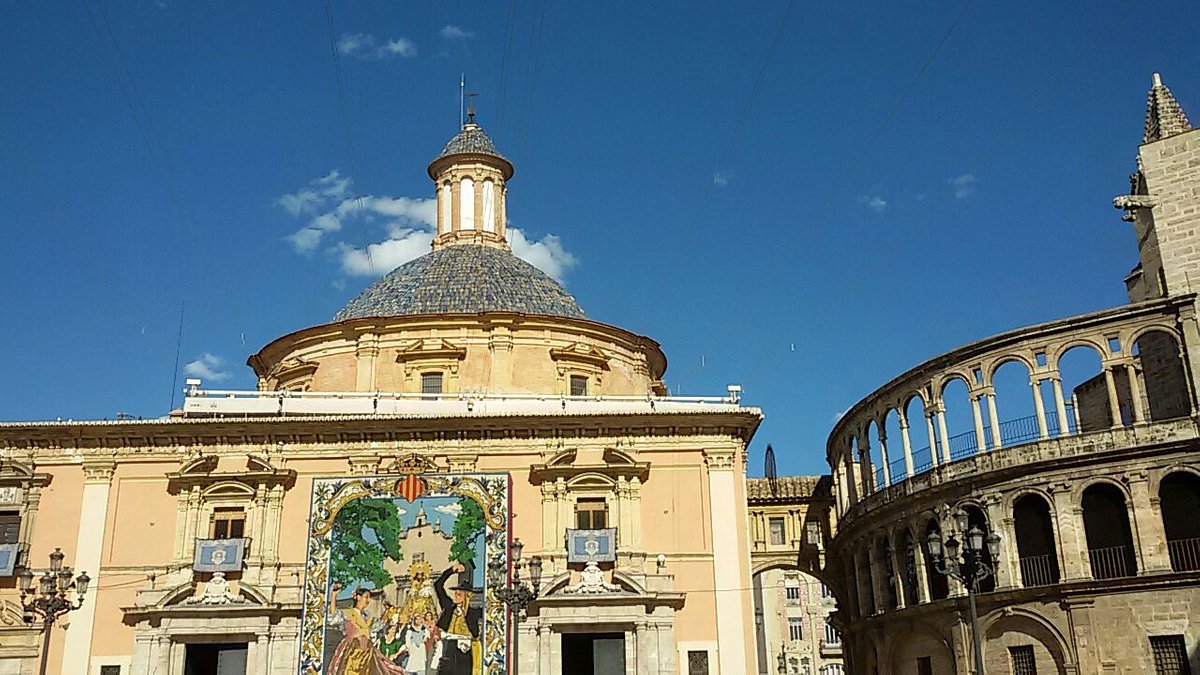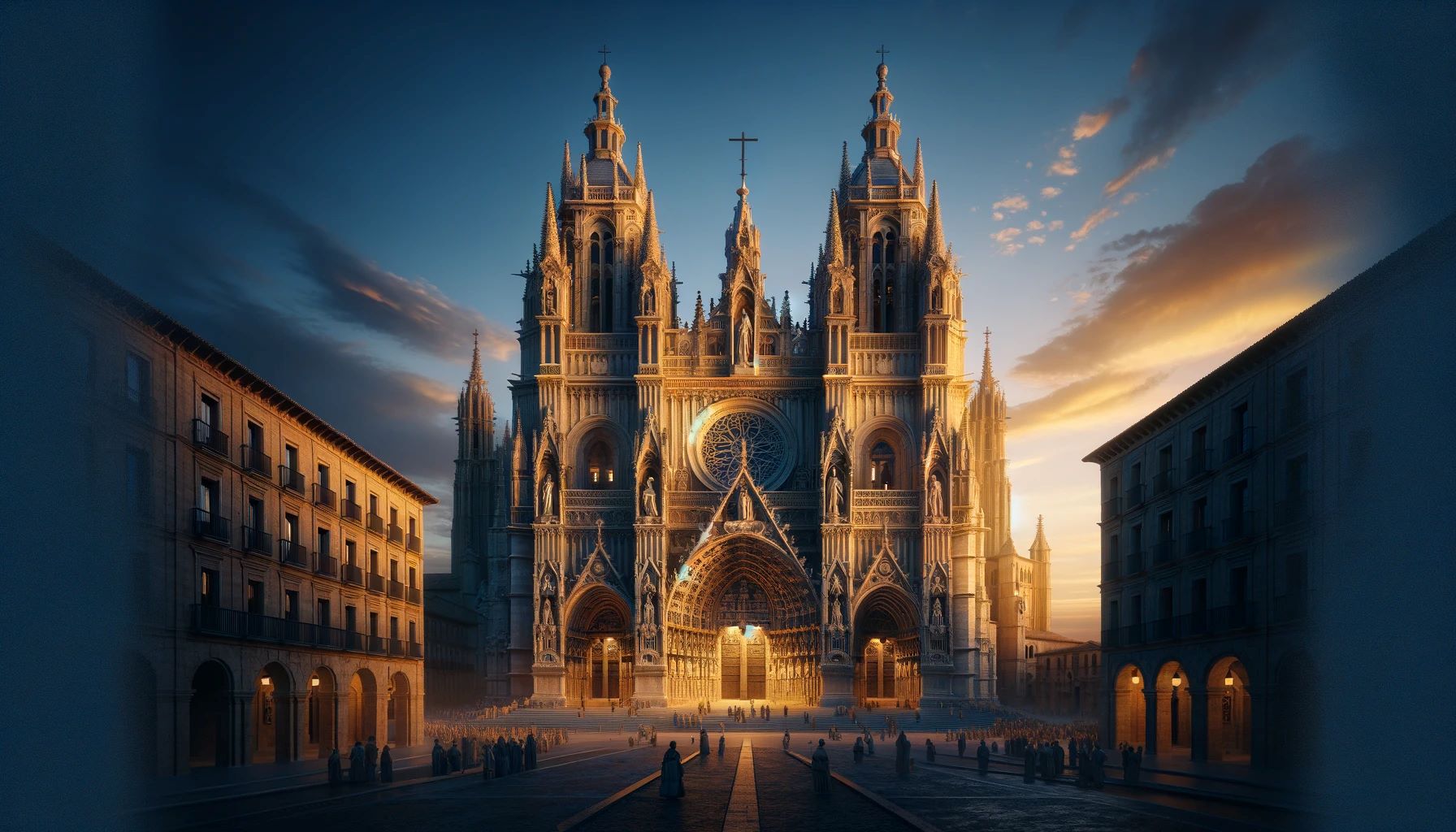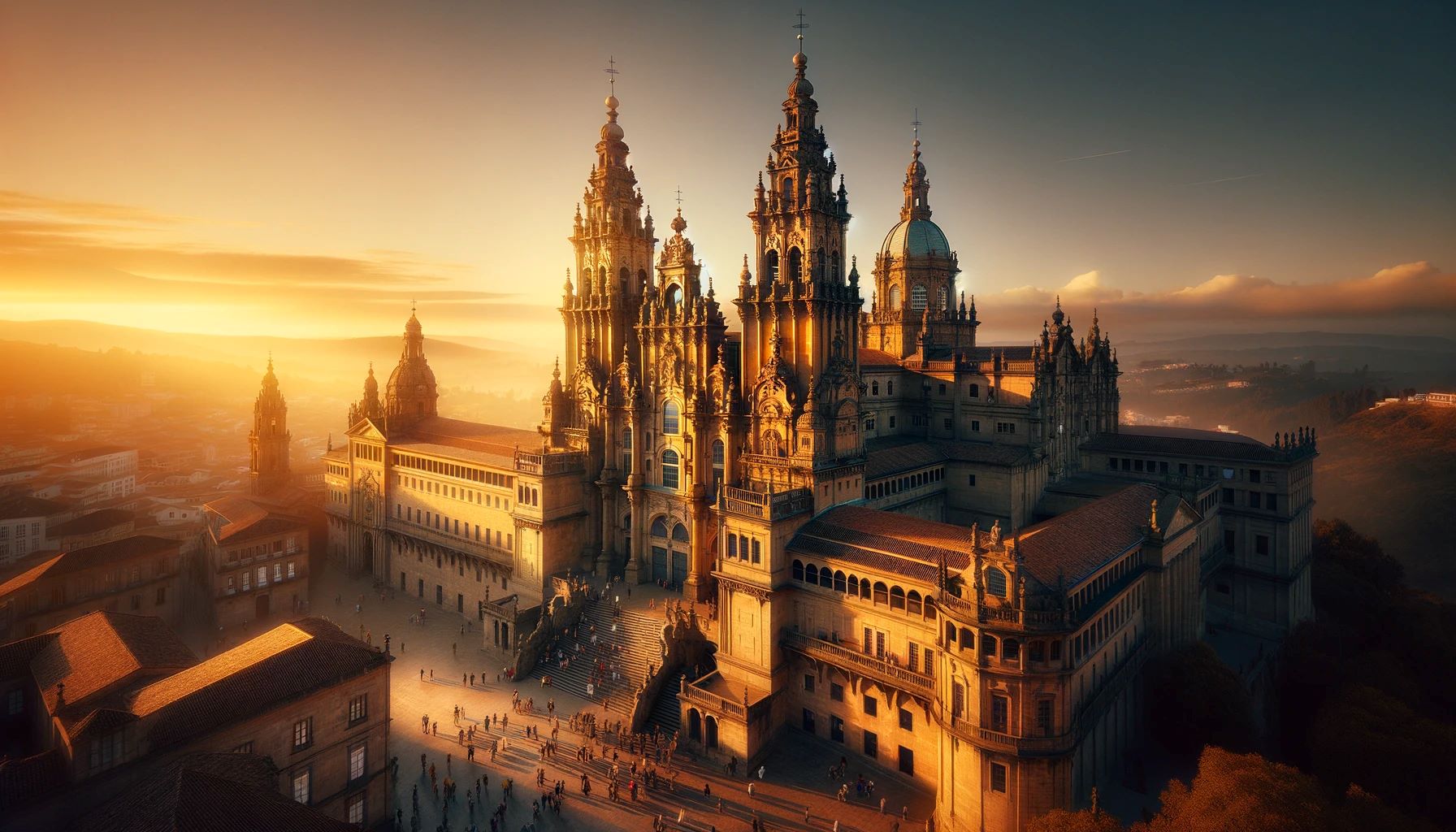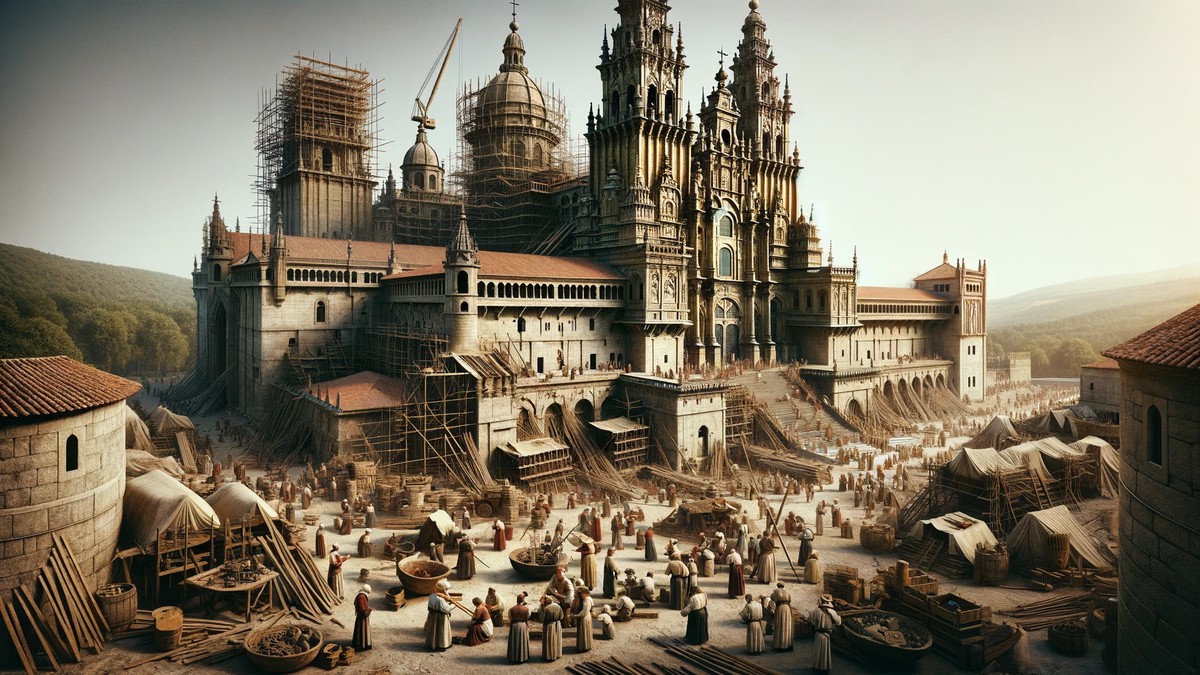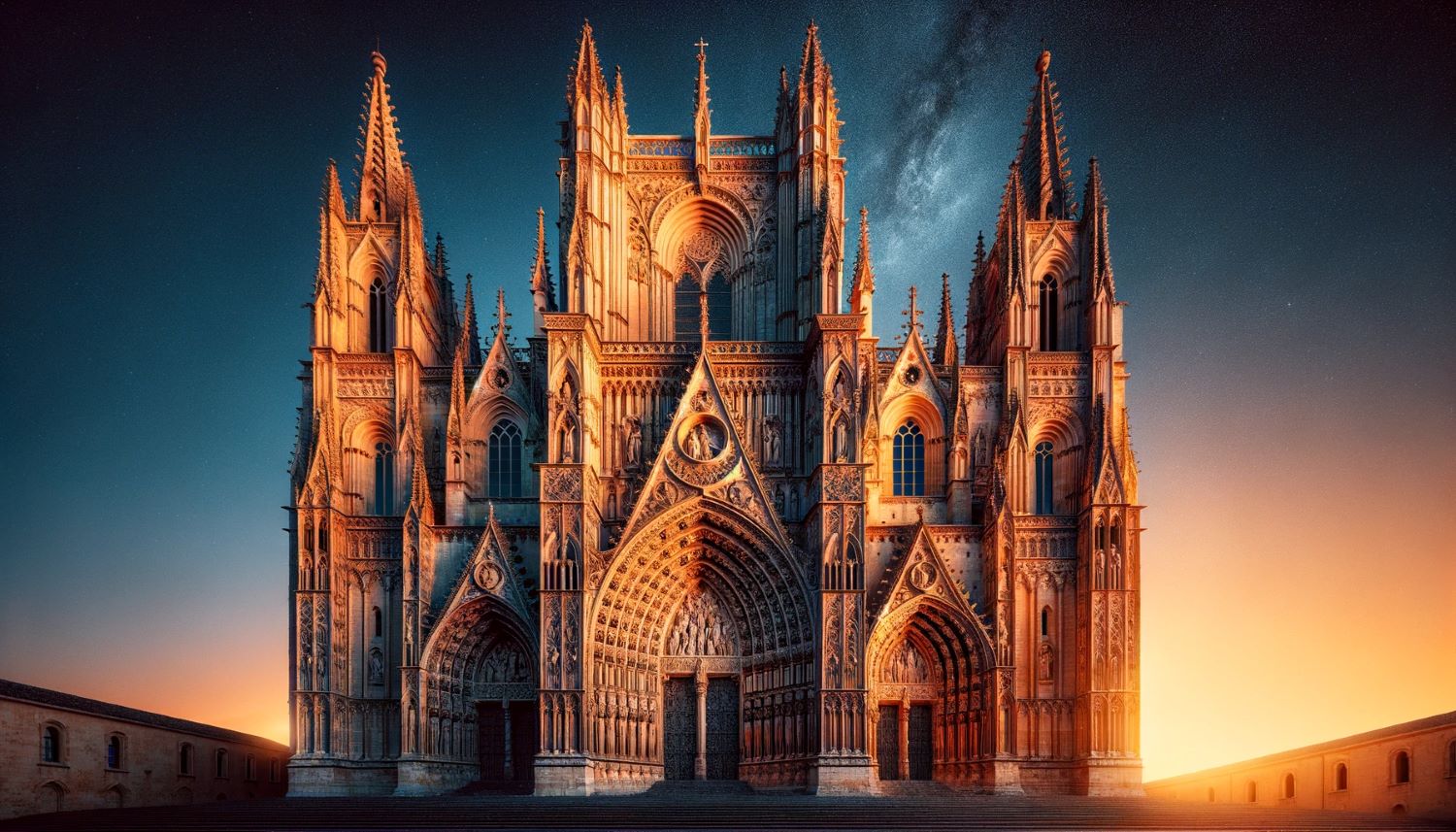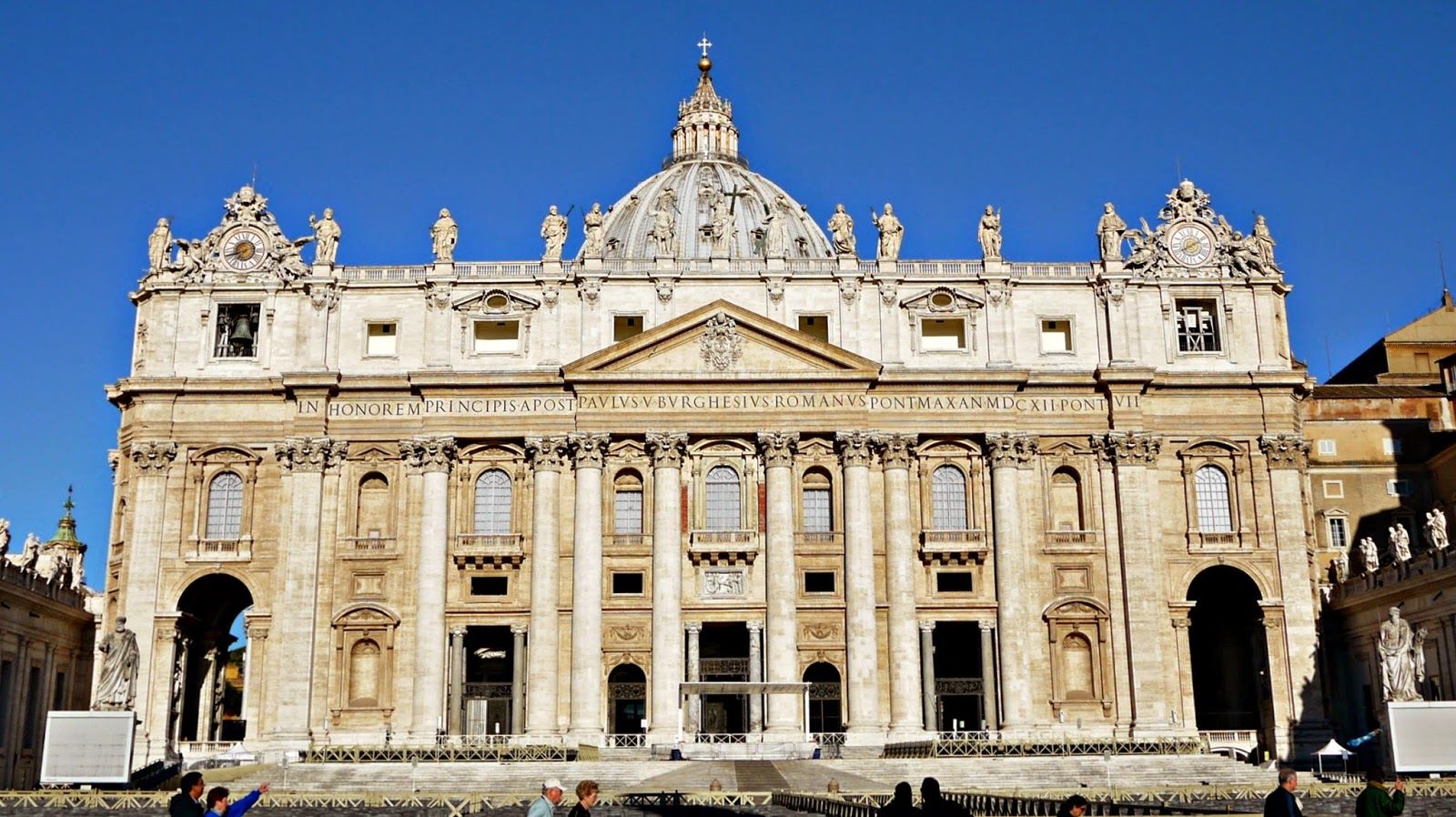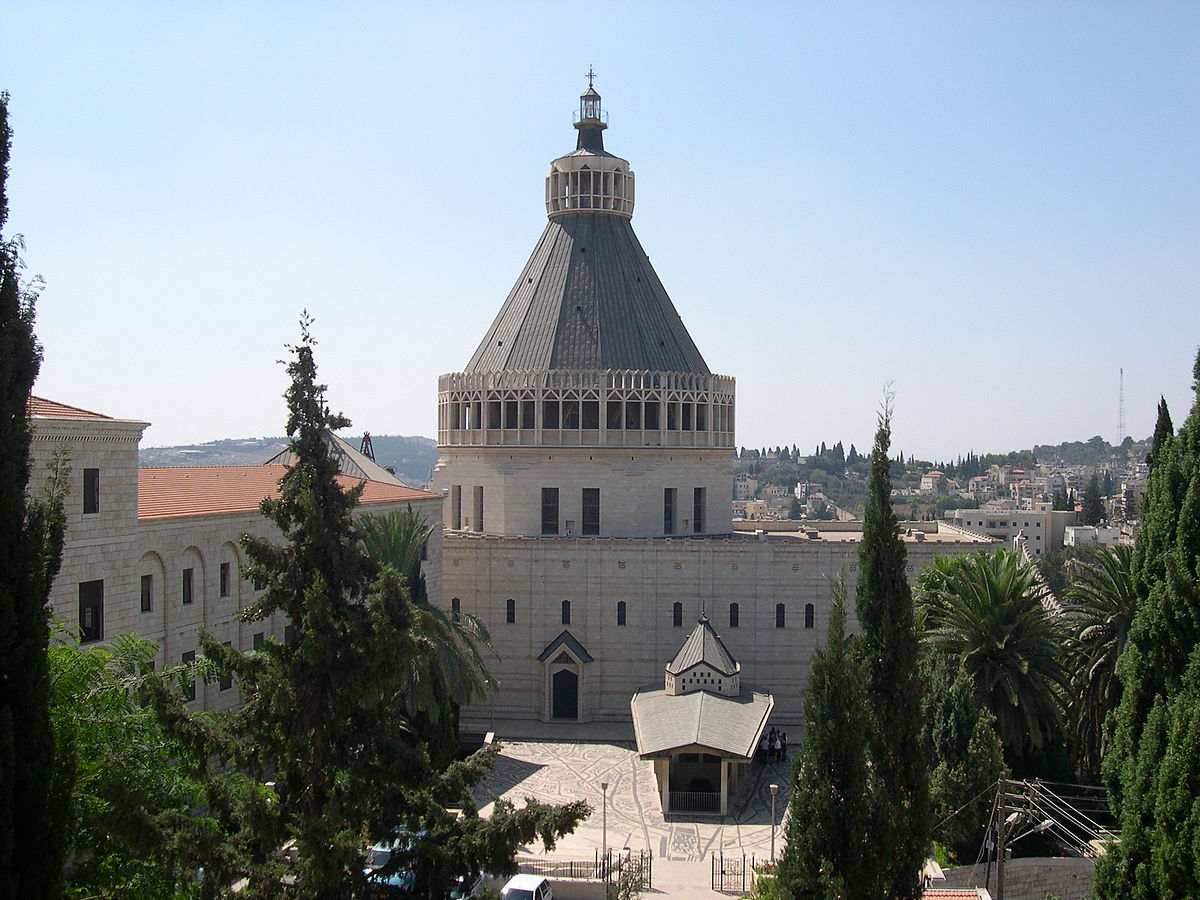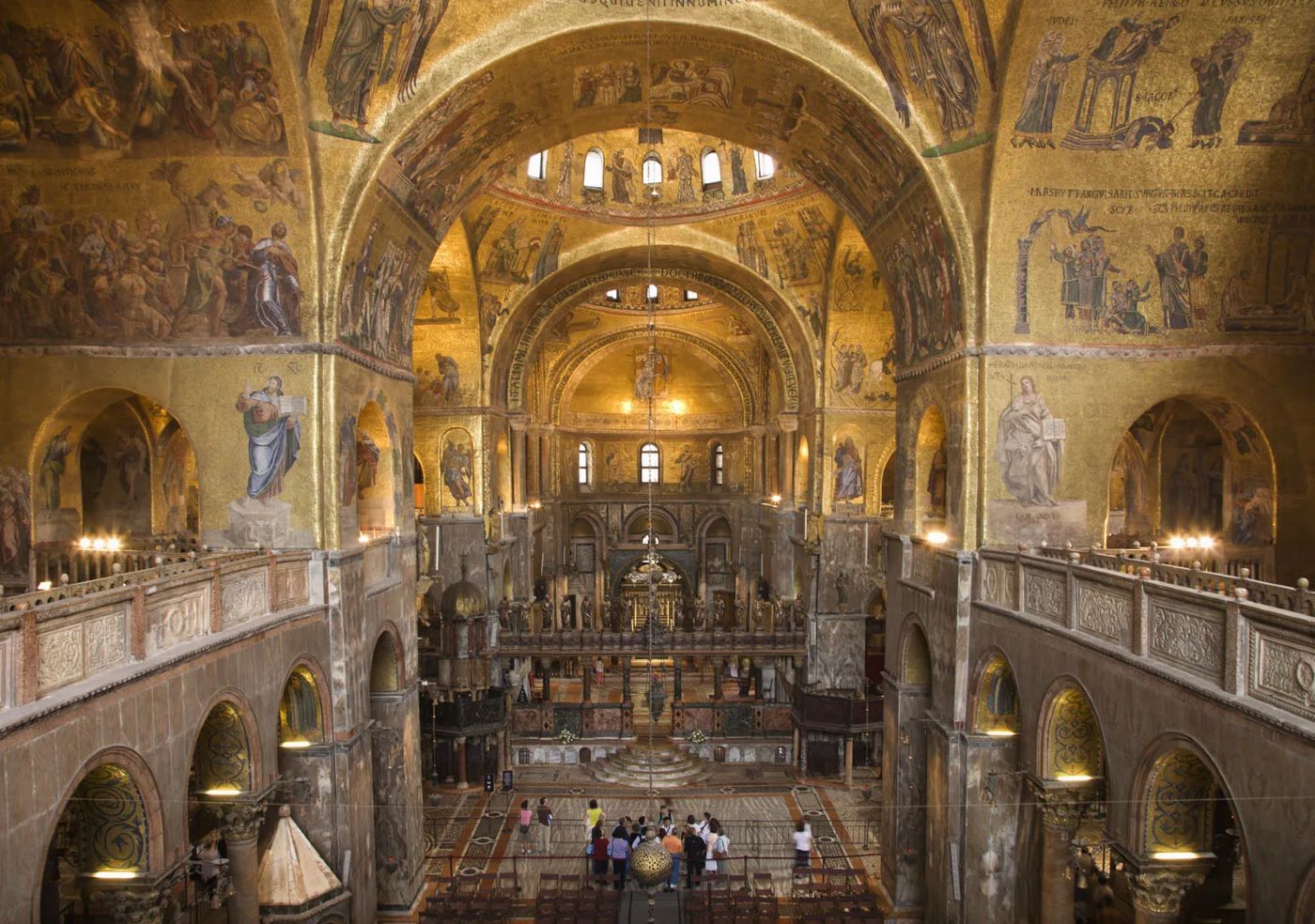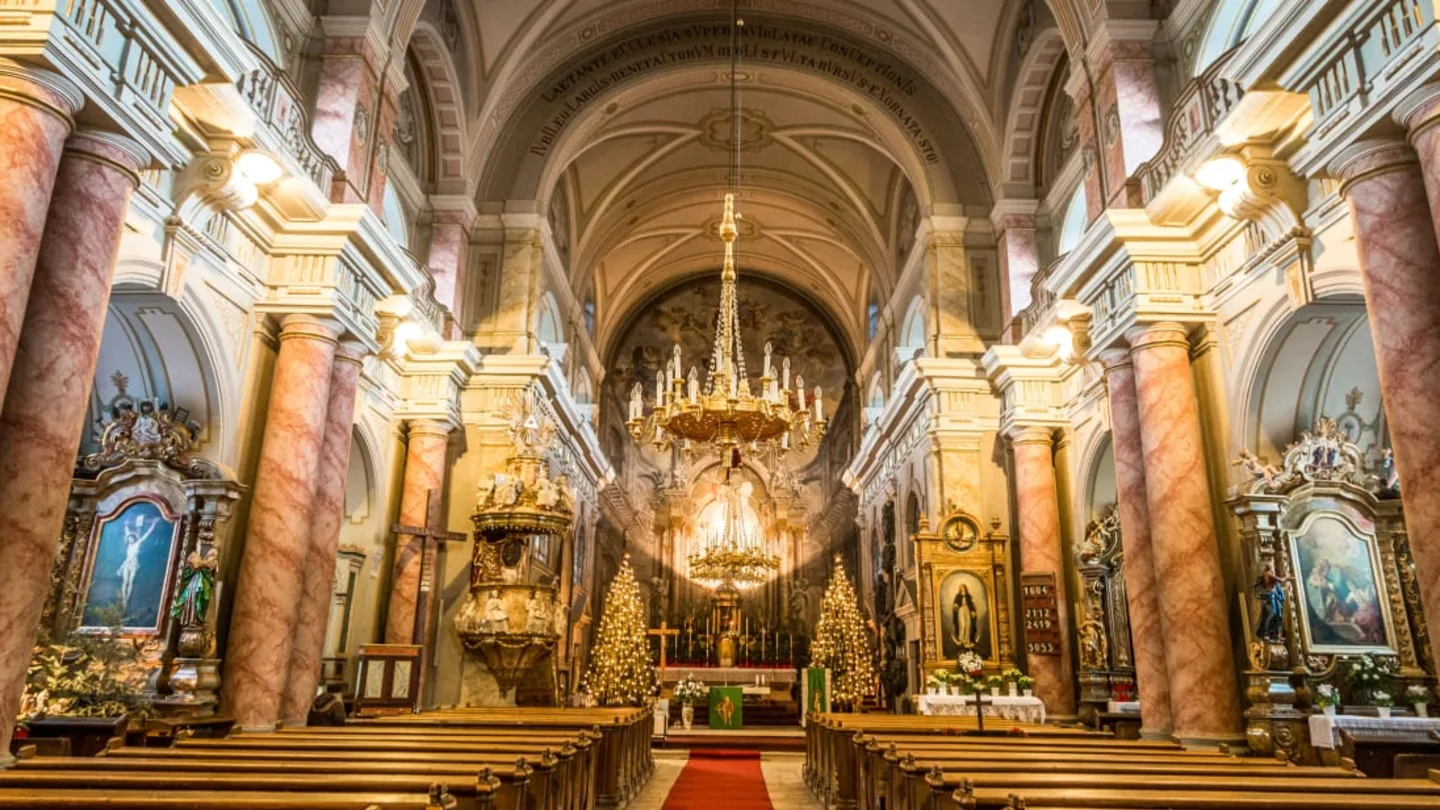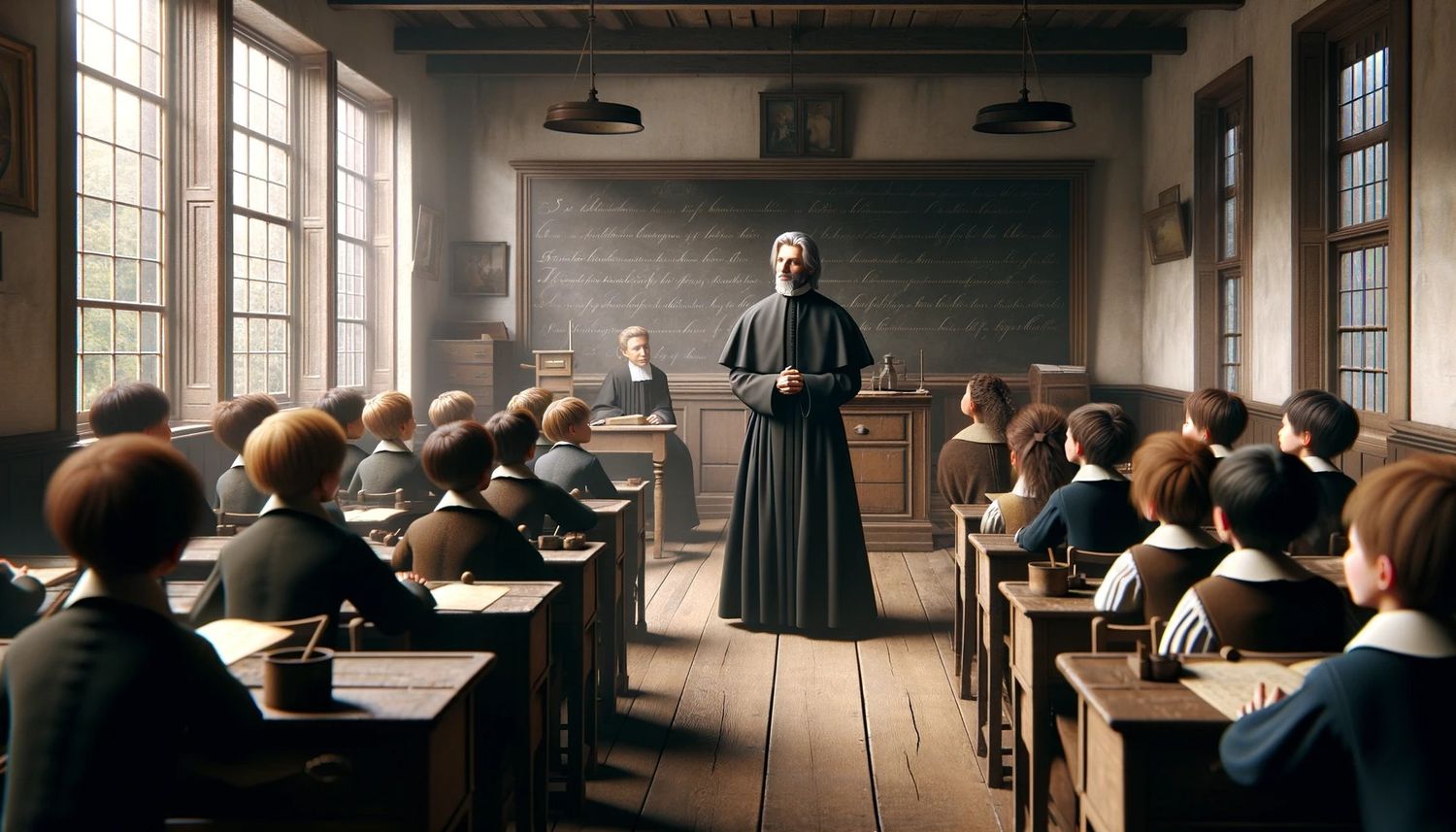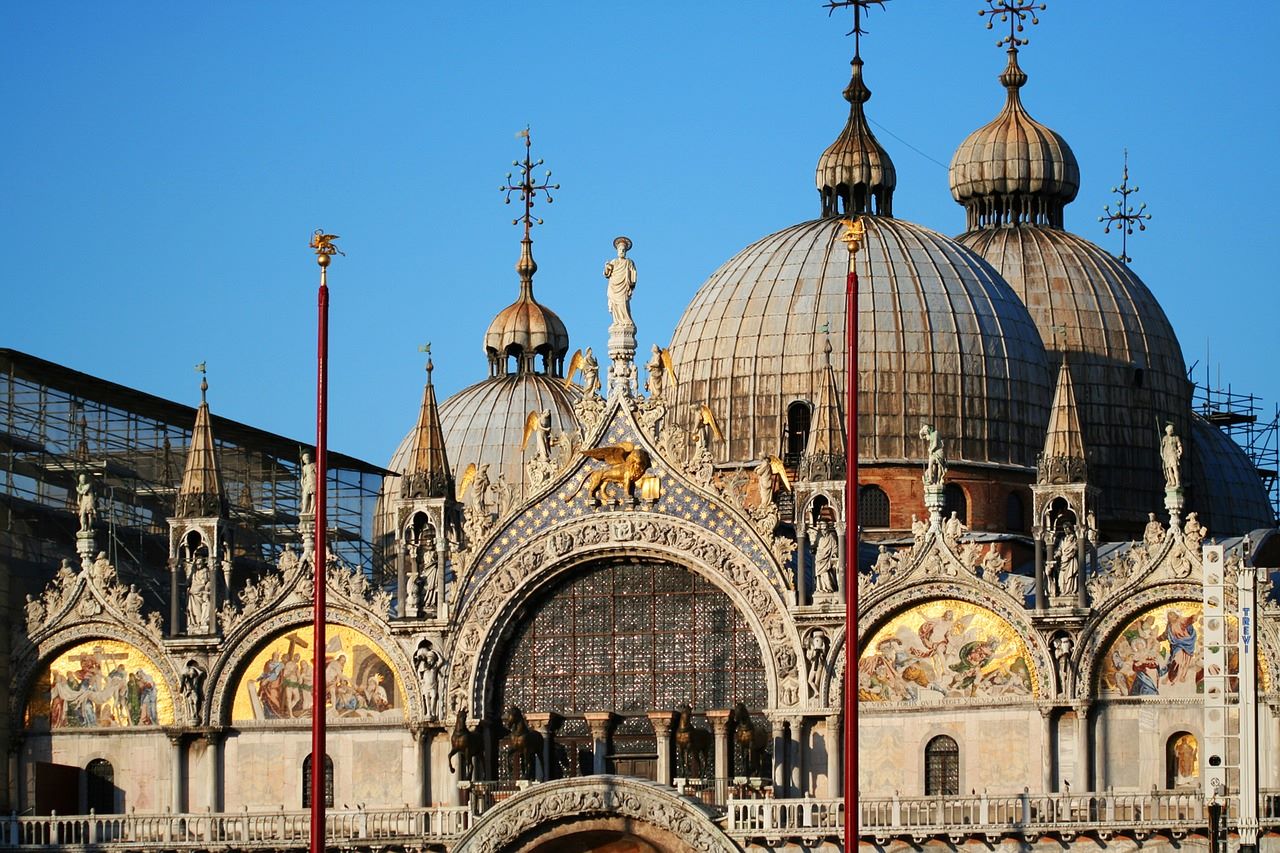Home>Arts and Culture>Basilica De Guadalupe
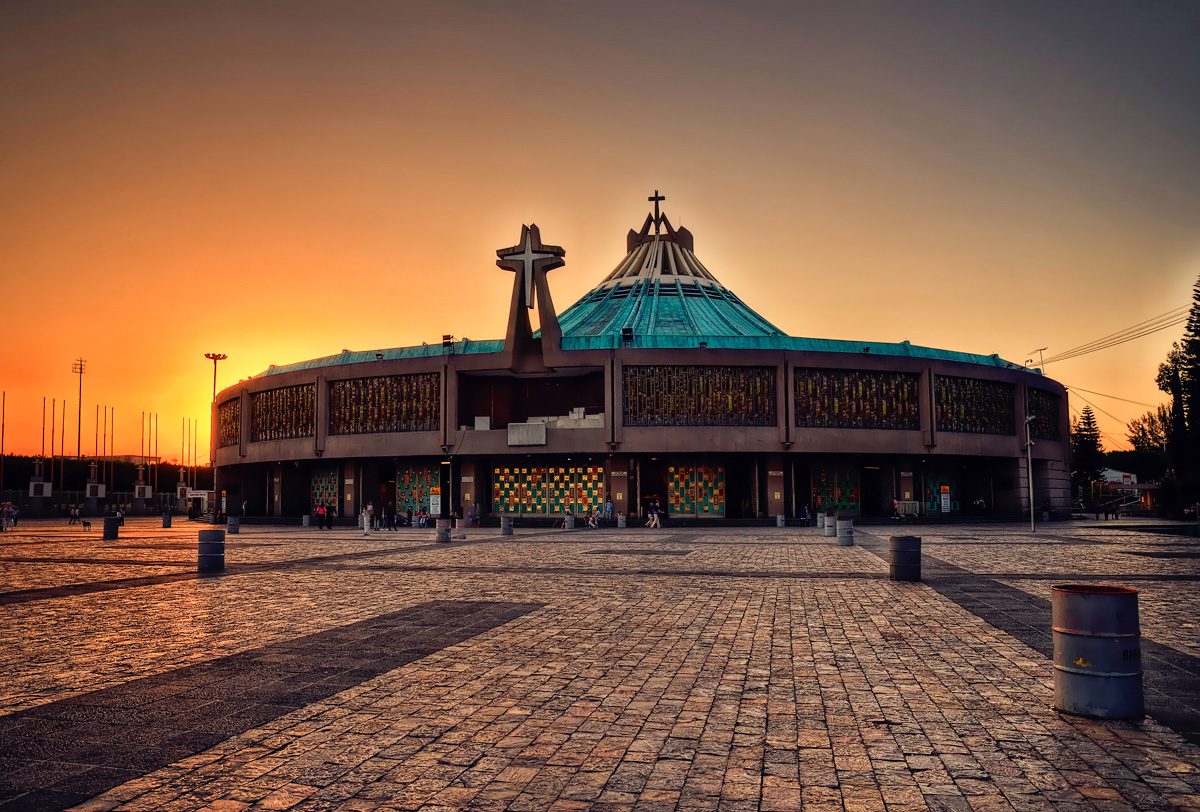

Arts and Culture
Basilica De Guadalupe
Published: February 10, 2024
Ericka Andersen, an editor at Christian.net, expertly merges digital strategy with content creation, focusing on faith and societal issues. Her communication skills enhance the platform's engaging narratives, fostering meaningful dialogue on belief's impact on society.
Explore the rich arts and culture at Basilica De Guadalupe, a historic site with stunning architecture and religious significance. Immerse yourself in the beauty and spirituality of this iconic landmark.
(Many of the links in this article redirect to a specific reviewed product. Your purchase of these products through affiliate links helps to generate commission for Christian.net, at no extra cost. Learn more)
Table of Contents
Introduction
The Basilica de Guadalupe, located in Mexico City, is one of the most significant religious sites in the Americas. This iconic basilica holds immense cultural and historical importance, drawing millions of visitors each year. The basilica is dedicated to the Virgin Mary, specifically to Our Lady of Guadalupe, who holds a revered place in Mexican and Catholic traditions. The story of the Virgin of Guadalupe is deeply intertwined with the history and identity of Mexico, making the basilica a symbol of faith, resilience, and unity.
The Basilica de Guadalupe is not only a religious sanctuary but also a testament to the enduring legacy of the indigenous and colonial cultures that have shaped Mexico. Its significance extends beyond religious boundaries, attracting people from diverse backgrounds who seek spiritual solace, historical insight, and architectural marvels. As a result, the basilica stands as a beacon of cultural heritage and a testament to the enduring power of faith and tradition.
The rich history, stunning architecture, and profound symbolism of the Basilica de Guadalupe make it a captivating destination for pilgrims, tourists, and scholars alike. In the following sections, we will delve into the captivating history, awe-inspiring architecture, and the profound significance of this revered site, shedding light on the enduring allure of the Basilica de Guadalupe.
History of Basilica De Guadalupe
The history of the Basilica de Guadalupe is a tapestry woven with threads of faith, culture, and miracles. Its origins can be traced back to a series of profound events that unfolded in the 16th century, forever altering the religious and cultural landscape of Mexico.
The story begins with an indigenous man named Juan Diego, who, according to tradition, encountered the Virgin Mary on the Hill of Tepeyac in December 1531. It is said that the Virgin appeared to Juan Diego, speaking to him in his native Nahuatl language and requesting the construction of a shrine in her honor at the site of their encounter. Despite initial skepticism from the local bishop, Juan Diego's unwavering faith and the miraculous appearance of the Virgin's image on his cloak, or "tilma," ultimately led to the construction of the first shrine dedicated to Our Lady of Guadalupe.
Over the centuries, the devotion to Our Lady of Guadalupe grew exponentially, transcending cultural and religious boundaries. The original shrine was replaced by a larger church, and as the number of pilgrims continued to swell, the need for an even grander sanctuary became evident.
In 1976, the New Basilica of Our Lady of Guadalupe was inaugurated, designed by the renowned Mexican architect Pedro Ramírez Vázquez. This modern marvel was constructed to accommodate the ever-increasing influx of visitors and to preserve the revered image of the Virgin of Guadalupe. The basilica's design ingeniously incorporates elements of both modernity and tradition, paying homage to the enduring legacy of the Virgin's apparition while embracing contemporary architectural principles.
The history of the Basilica de Guadalupe is a testament to the enduring power of faith and the profound impact of cultural encounters. It stands as a living testament to the convergence of indigenous spirituality and Catholicism, embodying the rich tapestry of Mexican identity. The miraculous events that unfolded centuries ago continue to resonate, drawing pilgrims and visitors from around the world to bear witness to the enduring legacy of Our Lady of Guadalupe.
The history of the Basilica de Guadalupe is a testament to the enduring power of faith and the profound impact of cultural encounters. It stands as a living testament to the convergence of indigenous spirituality and Catholicism, embodying the rich tapestry of Mexican identity. The miraculous events that unfolded centuries ago continue to resonate, drawing pilgrims and visitors from around the world to bear witness to the enduring legacy of Our Lady of Guadalupe.
Architecture of Basilica De Guadalupe
The architecture of the Basilica de Guadalupe is a breathtaking fusion of tradition, innovation, and spiritual symbolism. The basilica complex comprises several structures, each contributing to the site's grandeur and historical significance.
The centerpiece of the complex is the New Basilica, also known as the Basilica of Our Lady of Guadalupe. This modern architectural marvel was designed by Pedro Ramírez Vázquez and completed in 1976. The basilica's design ingeniously integrates elements of both Mexican and contemporary architectural styles, creating a space that is both awe-inspiring and spiritually uplifting.
The basilica's exterior is adorned with striking geometric patterns and vibrant colors, reflecting traditional Mexican motifs and paying homage to the country's rich cultural heritage. The interior of the basilica is equally captivating, with soaring ceilings, intricate artwork, and a sense of grandeur that befits its status as a revered religious site.
One of the most remarkable features of the New Basilica is its ability to accommodate a vast number of pilgrims and visitors. The open layout and spacious design allow for large congregations to gather for religious ceremonies, further enhancing the basilica's role as a center of faith and communal worship.
Adjacent to the New Basilica stands the Old Basilica, also known as the Chapel of the Cerrito. This historic structure, completed in 1709, served as the main shrine to Our Lady of Guadalupe for centuries. Its Baroque architecture and ornate decorations provide a stark contrast to the modernity of the New Basilica, offering visitors a glimpse into the evolution of religious architecture in Mexico.
The complex also includes the Plaza Mariana, a vast esplanade that can accommodate thousands of pilgrims, and the Tepeyac Hill, the site of the Virgin Mary's apparition to Juan Diego. These outdoor spaces are integral to the pilgrimage experience, providing areas for prayer, reflection, and communal gatherings.
Overall, the architecture of the Basilica de Guadalupe is a testament to the enduring legacy of the Virgin of Guadalupe and the profound impact of her apparition on Mexican culture and identity. The harmonious blend of traditional and contemporary architectural elements creates a space that is not only visually stunning but also spiritually enriching, attracting visitors from around the world to marvel at its beauty and significance.
Importance of Basilica De Guadalupe
The Basilica de Guadalupe holds profound importance on multiple levels, transcending its status as a religious site to become a symbol of cultural identity, historical significance, and spiritual devotion. Its impact extends far beyond the realm of Catholicism, resonating with people of diverse backgrounds and beliefs.
First and foremost, the basilica is revered as the epicenter of devotion to Our Lady of Guadalupe, the patroness of Mexico. The image of the Virgin Mary, enshrined within the basilica, is believed to hold miraculous powers and is venerated by millions of pilgrims who seek solace, healing, and spiritual guidance. The Virgin of Guadalupe is deeply intertwined with Mexican identity, serving as a unifying symbol that transcends religious affiliations and ethnic divisions. Her image is ubiquitous in Mexican culture, adorning churches, homes, and public spaces, and her feast day on December 12th is celebrated with fervor and joy throughout the country.
Furthermore, the Basilica de Guadalupe stands as a testament to the enduring legacy of the indigenous and colonial encounters that shaped Mexico's cultural landscape. The story of the Virgin's apparition to Juan Diego on the Hill of Tepeyac represents a pivotal moment of cultural convergence, blending indigenous spirituality with Catholicism. This fusion of traditions is embodied in the image of the Virgin of Guadalupe, who is often depicted with indigenous features, symbolizing the harmonious coexistence of diverse cultural influences.
From a historical perspective, the basilica serves as a living chronicle of Mexico's past, bearing witness to centuries of religious devotion, social upheaval, and cultural resilience. The site has weathered earthquakes, political changes, and the passage of time, yet it remains an enduring symbol of faith and perseverance.
Architecturally, the Basilica de Guadalupe is a marvel that seamlessly integrates traditional and modern design elements, reflecting the evolution of Mexican religious architecture. The complex's structures, including the New Basilica and the Old Basilica, showcase the country's rich artistic heritage and the enduring impact of Catholicism on Mexican art and culture.
In essence, the importance of the Basilica de Guadalupe transcends its religious significance, encompassing cultural, historical, and architectural dimensions. It stands as a testament to the enduring power of faith, the resilience of a nation, and the profound impact of cultural encounters. As a result, the basilica continues to captivate the hearts and minds of pilgrims, scholars, and visitors, drawing them into its embrace and inviting them to partake in the enduring legacy of Our Lady of Guadalupe.
Pilgrimage to Basilica De Guadalupe
Embarking on a pilgrimage to the Basilica de Guadalupe is a transformative journey that transcends mere travel; it is a spiritual odyssey steeped in reverence, reflection, and cultural immersion. Pilgrims from all corners of the globe are drawn to this sacred site, seeking solace, healing, and a profound connection to the enduring legacy of Our Lady of Guadalupe.
The pilgrimage experience begins long before reaching the basilica, as pilgrims often undertake arduous journeys, both physical and emotional, to reach the hallowed grounds. Many pilgrims walk for miles, some even barefoot, as a demonstration of their devotion and humility. Others travel for days, weeks, or months, carrying with them prayers, hopes, and personal tribulations. The pilgrimage becomes a deeply personal and communal endeavor, uniting individuals from diverse backgrounds under the shared mantle of faith and spiritual yearning.
Upon arriving at the Basilica de Guadalupe, pilgrims are greeted by the awe-inspiring architecture and the palpable sense of reverence that permeates the air. The complex's expansive esplanade, the Plaza Mariana, provides a gathering space for pilgrims to congregate, pray, and partake in religious ceremonies. The atmosphere is charged with emotion, as pilgrims from different walks of life come together to honor the Virgin of Guadalupe and seek her intercession.
Central to the pilgrimage experience is the veneration of the revered image of the Virgin of Guadalupe enshrined within the basilica. Pilgrims approach the image with a profound sense of devotion, offering prayers, candles, and tokens of gratitude. The act of gazing upon the image, believed to be miraculous, evokes a deep spiritual connection, offering solace and hope to those who seek the Virgin's intercession in their lives.
The pilgrimage to the Basilica de Guadalupe is not merely a physical journey; it is a spiritual sojourn that invites pilgrims to confront their innermost thoughts, fears, and aspirations. It is a time for introspection, healing, and renewal, as pilgrims seek to unburden themselves of worldly concerns and draw closer to the divine presence believed to reside within the basilica's sacred precincts.
Ultimately, the pilgrimage to the Basilica de Guadalupe is a testament to the enduring power of faith and the universal human yearning for transcendence. It is a journey that transcends time and space, weaving together the threads of history, culture, and spirituality into a tapestry of profound significance. For those who undertake this pilgrimage, the Basilica de Guadalupe becomes a sanctuary of the soul, a place where the boundaries between the earthly and the divine blur, and where the enduring legacy of Our Lady of Guadalupe continues to inspire and uplift all who seek her presence.
Conclusion
The Basilica de Guadalupe stands as a testament to the enduring power of faith, the resilience of a nation, and the profound impact of cultural encounters. Its rich history, stunning architecture, and profound significance make it a captivating destination for pilgrims, tourists, and scholars alike. The basilica's origins, rooted in the miraculous events of the 16th century, continue to resonate with people from diverse backgrounds, drawing them into its embrace and inviting them to partake in the enduring legacy of Our Lady of Guadalupe.
As a symbol of cultural identity and historical significance, the basilica transcends its status as a religious site. It embodies the harmonious coexistence of indigenous spirituality and Catholicism, reflecting the convergence of traditions that has shaped Mexico's cultural landscape. The image of the Virgin of Guadalupe, enshrined within the basilica, serves as a unifying symbol that transcends religious affiliations and ethnic divisions, resonating deeply with the hearts of millions.
Architecturally, the Basilica de Guadalupe is a marvel that seamlessly integrates traditional and modern design elements, reflecting the evolution of Mexican religious architecture. The complex's structures, including the New Basilica and the Old Basilica, showcase the country's rich artistic heritage and the enduring impact of Catholicism on Mexican art and culture.
The pilgrimage experience to the Basilica de Guadalupe is a transformative journey that transcends mere travel; it is a spiritual odyssey steeped in reverence, reflection, and cultural immersion. Pilgrims from all corners of the globe are drawn to this sacred site, seeking solace, healing, and a profound connection to the enduring legacy of Our Lady of Guadalupe. The pilgrimage becomes a deeply personal and communal endeavor, uniting individuals from diverse backgrounds under the shared mantle of faith and spiritual yearning.
In essence, the Basilica de Guadalupe is a living testament to the convergence of faith, culture, and history. It continues to captivate the hearts and minds of pilgrims, scholars, and visitors, drawing them into its embrace and inviting them to partake in the enduring legacy of Our Lady of Guadalupe. As the basilica stands as a beacon of cultural heritage and a testament to the enduring power of faith and tradition, it will continue to inspire and uplift all who seek its presence for generations to come.
